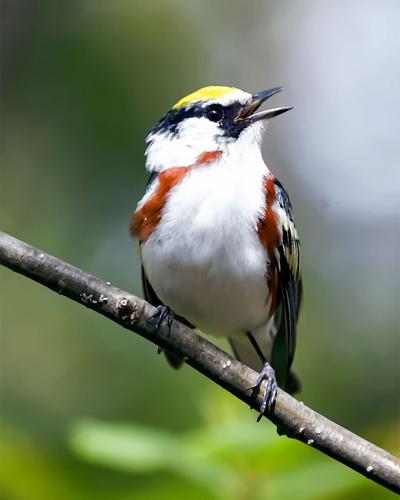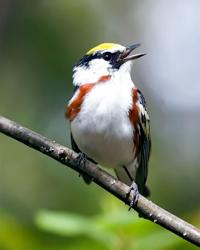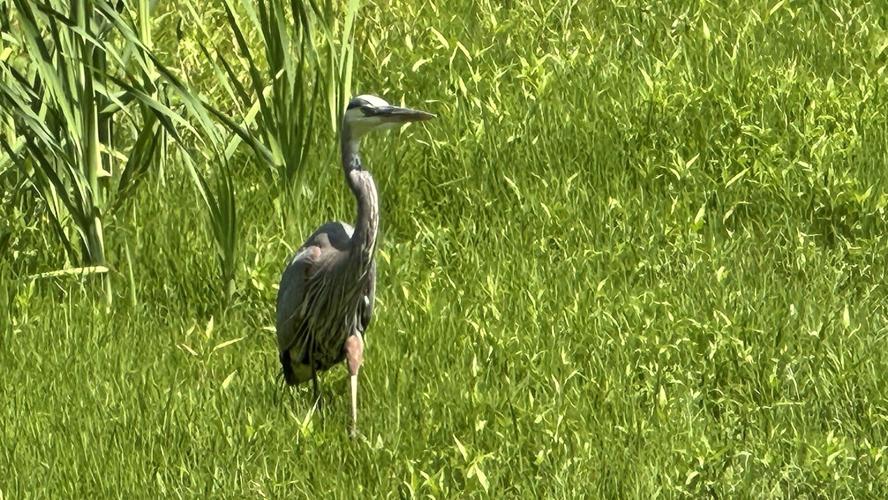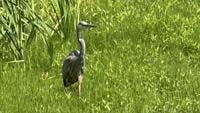The 12th annual Unicoi County Summer Count took place Saturday, June 14, with 15 observers in six parties. Sharp-eyed counters tallied 107 species, which is near the average of 108 species.
Conducted by members of the Elizabethton Bird Club, the survey gives a summer snapshot of the bird life present in the county. The organization also conducts a Carter County Summer Bird Count. I’ll discuss the results of that count in an upcoming column.
Notable sightings, according to count compiler Rick Knight, included black-billed cuckoo, red crossbill, pine siskin, Savannah sparrow and yellow-rumped warbler. The count also found 19 species of warblers.
The list:
Canada goose, 37; mallard, 34; wild turkey, 21; and ruffed grouse, 1.
Rock pigeon, 19; mourning dove, 53; black-billed cuckoo, 1; chuck-will’s-widow. 1; Eastern whip-poor-will, 7; chimney swift, 17; and ruby-throated hummingbird, 8.
Killdeer, 3; green heron, 1; and great blue heron, 4.
Black vulture, 3; turkey vulture, 47; red-shouldered hawk, 1; broad-winged hawk, 2; red-tailed hawk, 1; Eastern screech owl, 2; and barred owl, 1.
Belted kingfisher, 3; red-bellied woodpecker, 10; yellow-bellied sapsucker, 3; downy woodpecker, 9; hairy woodpecker, 4; Northern flicker, 6; and pileated woodpecker, 10.
Great crested flycatcher, 6; Eastern kingbird, 6; Eastern wood-pewee, 6; Acadian flycatcher, 52; least flycatcher, 3; and Eastern phoebe, 39.
White-eyed Vireo, 1; blue-headed vireo, 25; warbling vireo, 2; red-eyed vireo, 135; blue jay, 48; American crow, 89; fish crow, 3; and common raven, 2.
Carolina chickadee, 37; tufted titmouse, 51; tree swallow, 34; N. rough-winged swallow, 16; purple martin, 16; barn swallow, 46; and cliff swallow, 48.
Golden-crowned kinglet, 1; cedar waxwing, 28; red-breasted nuthatch, 9; white-breasted nuthatch, 9; and blue-gray gnatcatcher, 16.
Carolina wren, 50; house wren, 20; and winter wren, 3.
Gray catbird, 15; brown thrasher, 8; Northern mockingbird, 10; European starling, 347; Eastern bluebird, 26; veery, 24; hermit thrush, 5; wood thrush, 46; and Amercian robin, 195.
House sparrow, 17; house finch, 2; red crossbill, 5; pine siskin, 3; and American goldfinch, 37.
Chipping sparrow, 44; field sparrow, 6; dark-eyed junco, 28; Savannah sparrow, 1; song sparrow, 81; and Eastern towhee, 5.
Eastern meadowlark, 5; orchard oriole, 4; Baltimore oriole, 1; red-winged blackbird, 43; brown-headed cowbird, 8; and common grackle, 30.
Ovenbird, 46; worm-eating warbler, 7; Louisiana waterthrush, 10; black-and-white warbler, 22; Swainson’s warbler, 16; Kentucky warbler, 1; Common yellowthroat, 9; hooded warbler, 52; American redstart, 1; Northern parula, 32; magnolia warbler, 1; Blackburnian warbler, 2; yellow warbler, 1; chestnut-sided warbler, 12; black-throated blue warbler, 29; yellow-rumped, 1; yellow-throated warbler, 21; black-throated green warbler, 40; and Canada warbler, 18.
Scarlet tanager, 16; Northern cardinal, 63; rose-breasted grosbeak, 3; blue grosbeak, 3; and indigo bunting, 64.
Knight noted that some species, as always happens, were missed by counters. These included wood duck, yellow-billed cuckoo, the accipiter hawks, bald eagle, great horned owl, American kestrel, yellow-throated vireo, brown creeper and yellow-breasted chat.
I counted with Chris Soto from the Limestone Cove area to the top of Iron Mountain Gap along Highway 107. This was my first observation of the blow Hurricane Helene dealt Iron Mountain Gap. The scenery at the top of the mountain on the line between North Carolina and Tennessee has been changed radically. So many trees were toppled by the storm’s passage. But the birds appeared unaffected by the changes, with an assortment of warblers, indigo buntings and yellow-bellied sapsuckers.
•â¶Ä˘â¶Ä˘
Bryan Stevens has written about birds and birding since 1995. To send him a question, make a comment or share a sighting, email him at ahoodedwarbler@aol.com.













